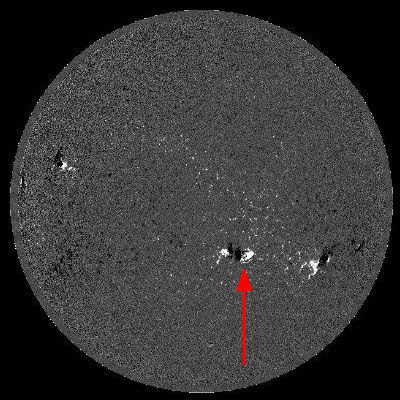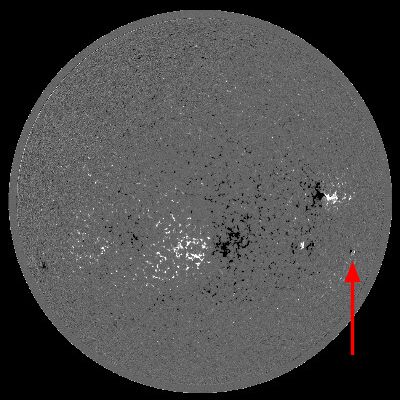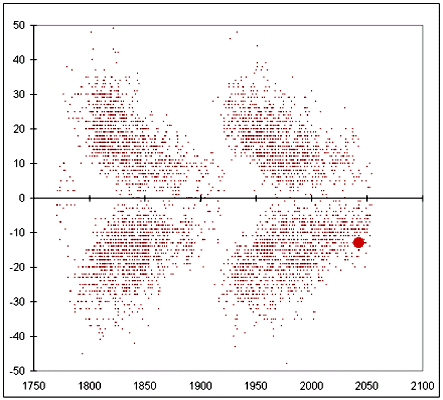On the first group of the new cycle
We are in a minimum of activity. This is a curious moment in the cycle in which predictions are made and unmade, the smallest pore becomes a whole group, and strange controversies arise about whether a group belongs to a cycle or not. The reason for this small article is to try to clarify some concepts about this latter aspect.
For a group to be considered as belonging to a new cycle, it must meet three conditions:
- The group must have spots (condition not as trivial as it seems). The confusion on this point arises from the numbering assigned by the NOAA, which refers to active regions, not groups (an active region may have spots or not). In addition, a small pore observed during a maximum may not be considered as a group, but in the context of low activity of a minimum, it acquires more relevance and the probability of counting it as a group is greater. It is very difficult to establish a valid criterion, but a tiny pore, although it has been numbered, should not necessarily be considered as a group.
- The group must have the polarity reversed. According to Hale's law, the groups of a cycle must have a reverse polarity to those of the previous cycle. This is the main source of confusion, because an inverse polarity does not guarantee belonging to one cycle or another. Even during a maximum of activity, groups of polarity contrary to the rest can be observed, and a good example of this is that a high percentage of the delta groups present this characteristic. On the other hand, at a minimum, the groups appear near the equator and it is not rare that overlaps may appear, that is, groups with polarities of the northern hemisphere emerge with negative latitude, and vice versa. In addition, during the first phases of the life of a group, it is relatively frequent to present an inverse polarity, reestablishing the correct orientation as soon as the group develops. In the figure it can be seen, as an example, a group that emerged on August 19th, 2005 along with another group that had the polarities normally oriented.
 |
- The group should be at high latitude. This is the most important characteristic, but the problem consists in locating the limit latitude between both cycles. The simplest way to separate the latitudes corresponding to each cycle is the Maunder diagram. In the diagram we find an empty zone that separates the "wings" of consecutive cycles, and only sporadically do we find some group in that zone. The ambiguity presented by these rare specimens almost always disappears when they prove their polarity.
Keeping in mind all of the above, it may be interesting to analyze a region that in many sources is classified as the first of cycle 24. It appeared on July 30th, 2006 and, although in the SOHO images a small pore is distinguished, it did not receive a NOAA numbering since it has not been confirmed by two observatories independently. Therefore, in principle it seems doubtful that we can qualify it as a "group".
As it is observed in the magnetogram, it has inverted polarities, so at least it fulfills that condition. However, its latitude was -13º, and that is what most questions its allocation to the new cycle. Not only the first group has never appeared in these latitudes, but, if we use the Maunder diagram, we see that it fits perfectly in the point cloud corresponding to cycle 23 (the red dot indicates its position):
So, it seems clear that this group (if it can really be considered as such), belongs to the current cycle and, therefore, at the time of writing these lines (May 2007) we are still waiting for the first group of the new cycle, which will appear surely, in latitudes around 30º. It should also be noted that the beginning of the cycle is not marked by the appearance of the first group, but by the minimum number of Wolf smoothed.
Javier Ruiz





